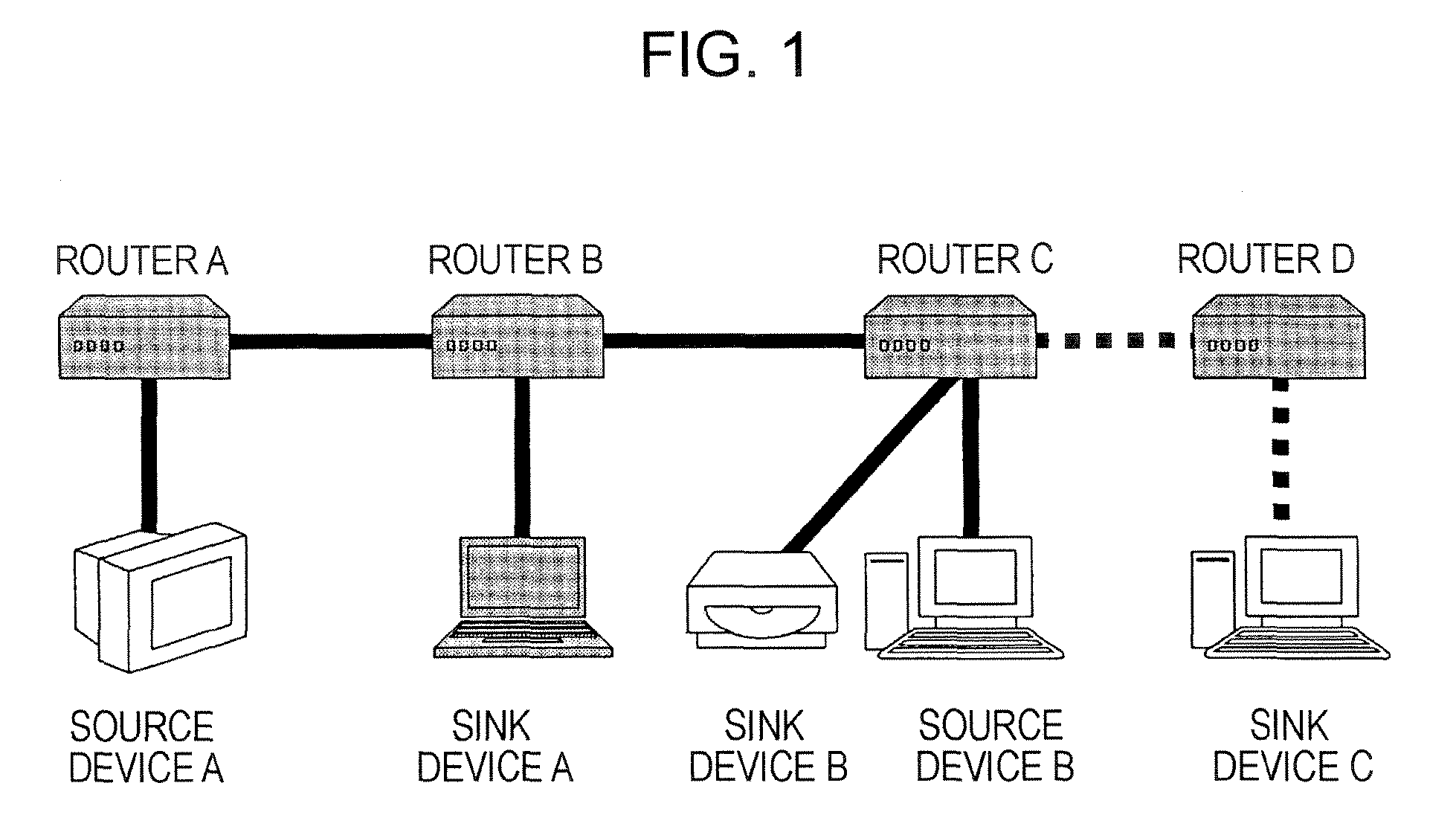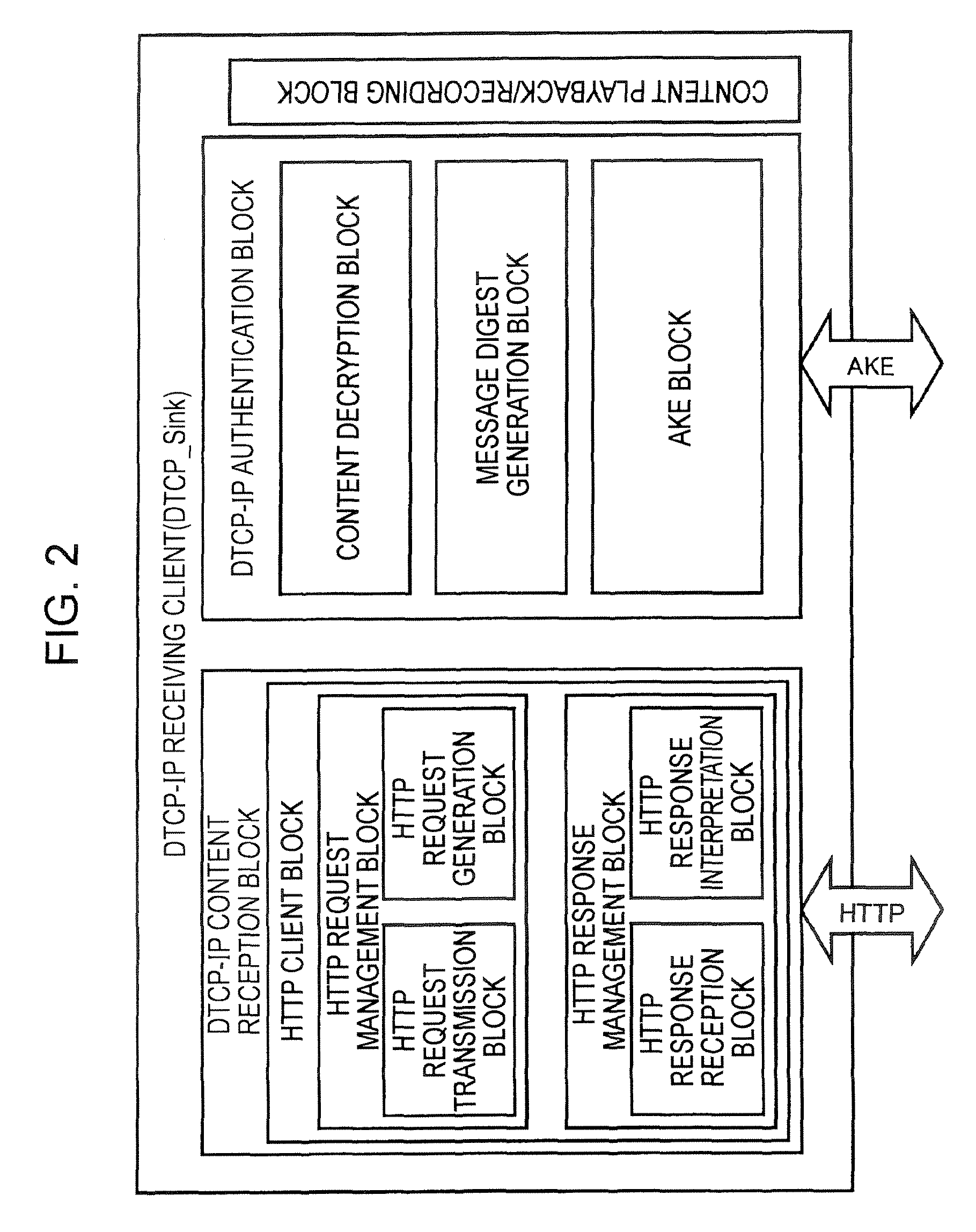Information communication system, information communication apparatus and method, and computer program
a technology of information communication and information communication apparatus, applied in the field of information communication systems, information communication apparatuses and methods, and computer programs therefor, can solve the problems unauthorized clients cannot obtain cryptographic keys, and content cannot be received, so as to achieve the effect of limiting the range of parties
- Summary
- Abstract
- Description
- Claims
- Application Information
AI Technical Summary
Benefits of technology
Problems solved by technology
Method used
Image
Examples
Embodiment Construction
[0073]An embodiment of the present invention will be described in detail with reference to the drawings.
[0074]An embodiment of the present invention relates to an information communication system for transmitting information content to be protected by copyright over an IP network, more specifically, to an information communication system in which AKE commands for authentication and key exchange (AKE) are transmitted and received between DTCP-IP-compliant information communication devices and a key shared through the authentication and key exchange is used to safely transmit encrypted content. In the authentication and key exchange between DTCP-IP-compliant information communication devices, the TTL field values included in the headers of the IP packets carrying the AKE commands are controlled so as not to exceed 3, and the range of devices between which the authentication and key exchange are carried out is limited to a predetermined number of router hops or less.
System Configuratio...
PUM
 Login to View More
Login to View More Abstract
Description
Claims
Application Information
 Login to View More
Login to View More - R&D
- Intellectual Property
- Life Sciences
- Materials
- Tech Scout
- Unparalleled Data Quality
- Higher Quality Content
- 60% Fewer Hallucinations
Browse by: Latest US Patents, China's latest patents, Technical Efficacy Thesaurus, Application Domain, Technology Topic, Popular Technical Reports.
© 2025 PatSnap. All rights reserved.Legal|Privacy policy|Modern Slavery Act Transparency Statement|Sitemap|About US| Contact US: help@patsnap.com



